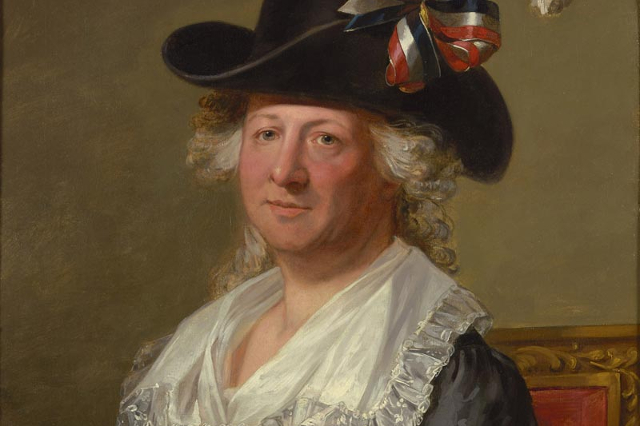Blackmail is as old as secrets. The idea of someone using secret information to force someone to do what they want exists in all cultures throughout time. It is generally frowned upon and is certainly considered a crime, but the blackmailer has to be caught and often the victim wants to keep it a secret too, which makes it so appealing. It is important to remember that blackmail only works if no one finds out. Sometimes this can backfire.
10. KGB tried to blackmail Indonesian president with sex video

One of the most popular sources of blackmail is a person’s sexual history. Individuals and even governments have used sex as a weapon against their enemies for centuries. In the case of Indonesian President Sukarno, the KGB decided that the man had gotten into trouble when they arranged for him to meet flight attendants during his visit to Moscow in the 1960s. They bugged his room and apparently they took away his connections .
Sukarno was the first president of the country after it broke away from Dutch control. But it gave many strategic advantages to countries like the Soviet Union and America in the region. The Soviets thought that filming him with a flight attendant and publishing it would discredit him and cause him to lose his position if he did not bend to their will. Legend has it that he was very happy to find out that they had filmed him and asked for a copy of the recording .
By the way, the CIA tried to do something similar. They were looking for a double to make some pornographic films, and when that failed, they created a mask in his likeness for someone else to wear. The film was apparently called Happy Days, though no one knows what happened to it.
9. The Soviets tried to pass off a reporter as gay

Joseph Alsop was one of the most famous reporters in the country at the height of the Cold War. He was a man of knowledge, with the ear of major politicians, including the president. He worked with the CIA to gather intelligence, using his work as a cover, and his columns were read by millions.
The Soviet government was no fan of Alsop, and as a secret CIA agent you can imagine why. They jumped at the chance to blackmail him when he came to Moscow, thanks to rumors about Alsop's sexual orientation.
At a time when homosexuality could have ended a career, Alsop kept his sexual orientation a secret. KGB framed the reporter with a man in a Moscow hotel room and then secretly photographed them together. Their intention was to blackmail him into becoming their spy. Things did not go as planned.
Instead of doing what they demanded, Alsop asked if he could get copies of photographs . He then gave the CIA a detailed sexual history that included the Moscow meeting, depriving the Soviets of any ammunition they might have thought they had. Word of the incident reached J. Edgar Hoover and then the President. But even when it got out in certain circles, no one used the knowledge as a weapon, and Alsop's career was not damaged. In fact, years later, someone would publish the photos, but the media outlets they sent them to refused to publish them.
8. Scientologists tried to blackmail Trey Parker and Matt Stone

The Church of Scientology has been mired in controversy for decades. Things aren't much better these days, with the church becoming the butt of numerous jokes, some more cruel than those made on South Park.
In 2005, in South Park an episode entitled " was shown Trapped in the Closet" , which was highly critical of Scientology and its beliefs. The Church, notoriously defensive, aggressive and litigious, did not take it well. They hired investigators to look into the creators South Park Trey Parker and Matt Stone in hopes of finding dirt on the two men that could be used for blackmail. This included checking records and evenwaste sorting .
The church denied ever engaging in such behavior, but in leaked note said otherwise. However, there seemed to be no information available and all they could determine were useless details such as what catering service they used and what kind of cars they drove.
7. The FBI tried to blackmail MLK into committing suicide

The FBI spent years trying to overthrow Martin Luther King Jr. FBI Director J. Edgar Hoover was apparently deathly afraid that MLK would join communist party, so they wanted to strike first and destroy this man by any means necessary. This included trying to get him to kill himself.
King was under surveillance, and although no links to communism were found, evidence was found that he had been having extramarital affairs. Hoover decided to use this information, along with the tapes, to try to blackmail King a year after his famous "I Have a Dream" speech.
An anonymous letter was sent to King along with the tapes. The letter repeatedly insulted him, calling him a fraud, a lunatic, and an animal. The writer threatened to leak the tapes to churches and the general public. They went on to say, "There's only one thing left for you to do. You know what this is. King realized that they wanted him to commit suicide.
King quickly concluded that the FBI was behind the letter, and he obviously didn't fall for the ruse. Instead, he went on to secure his legacy as one of the greatest civil rights leaders of all time.
6. The Nestle Pigeon Blackmailer

Food tampering is an insidious crime that can cause mass panic. We expect the foods we eat to be safe, and there is no rhyme or reason for someone to accidentally poison the food on store shelves, so it can shake even the best of us. In 1999, a man tried to blackmail Nestle after adding cyanide to products like mayonnaise and mustard He threatened to do more if the company did not pay him. diamonds worth 14 million US dollars .
The plan was for Nestlé to place the diamonds in small pouches on the necks of homing pigeons, which would return the loot to him. Instead, the police simply fitted a tracking device to the pigeon and followed it to the man's home, where he was arrested. For his troubles, he received 11 years in prison.
5. Model blackmail of Jaromir Jagr

The only thing a blackmail plot needs to work is for the victim to not care. That's what happened to the model who tried to blackmail hockey player Jaromir Jagr after taking a selfie with him in bed.
Jagr, 43 at the time, was asleep when the 18-year-old model he was in bed with took the photo. It is unclear whether she was trying the model itself or someone else use the photo to extort $2,000 from Jagr. The problem was that Jagr was a single man sleeping with an older woman. He didn't care if anyone saw the photo. He told the blackmailer to do whatever he wanted. The photo was released to the public and no one, including Jagr, cared.
The only consequence of this whole disaster seemed to be that the model, who was dating the young hockey player at the time, was dumped by her boyfriend. Apparently, Jagr was one of his hockey idols, and he was not amused by this.
4. George Ratterman's staged illegal photo to get him out of the election

Former professional football player George Ratterman ran for sheriff of Campbell County, Kentucky, back in 1961. The local mob was not amused and did not want him in a position that had a history of corruption. A new law-abiding sheriff would be bad news.
Ratterman's family received threatening phone calls, and then, in May 1961, he was kidnapped and drugged. After he passed out, he was photographed in bed with a stripper named April Flowers . The plan was to blackmail him into dropping out. Instead, the entire plot was exposed, and instead of causing him to lose support, he soared to the top of the race and won the election .
3. John Stamos' Failed Blackmail

Besides politicians, celebrities are the most likely targets of blackmail. They are often rich and have a public persona they usually want to preserve. Someone like John Stamos, for example, would want to maintain his image as a charming, handsome, but mostly harmless man. In 2010, a couple threatened blackmail him with photos , in which Stamos is naked with an underage girl and taking drugs. It would certainly have ruined his career.
Instead of paying the $680,000 they were demanding, Stamos went to the police. He said there were no photos and it was all a lie. The FBI raided the blackmailers' home and, wouldn't you know it, there were no photos. The couple claimed they did exist and implied that the FBI had stolen them for some reason. Either way, the couple was sentenced to four years deprivation of liberty.
2. A merchant tried to blackmail Constance Copp, which led to her becoming the first female sheriff in America.

Constance Copp was not a woman to be trifled with. In July 1914, silk merchant Henry Kaufman crashed his car into Copp's buggy. He caused damage, but refused to pay, and Kopp wasn't going to let that happen. She sued him, after which she began receiving threatening letters. Kaufman's friends demanded money from her and threatened to kidnap her teenage sister and sell her into white slavery. In another letter, $1000 was needed , otherwise their house will be burned down.
With the help of the local sheriff, Kopp was able to indict Kaufman and his men. The sheriff was so impressed with her determination that he appointed her deputy sheriff, a position no woman had held before.
1. Chevalier d'Eon tried to blackmail the King of France and was exiled

Few figures in history have lived lives as interesting as those of the Chevalier d'Eon. For 49 years, the Chevalier lived as a man and worked in the service of the King of France as a diplomat and spy. Then the following 33 years old She lived as a woman. If that sounds a little confusing, that's because it is.
D'Eon was sent to the British court after the Seven Years' War under the guise of an ambassador, but in reality he was spying for King Louis XV. Unfortunately, d'Eon lived in luxury and was eventually dismissed for wasting money. Fearing the Bastille, he threatened reveal all the secrets, which he learned as a French spy.
The British welcomed d'Eon openly, and the French king paid him to keep quiet. But he was exiled and could never return home. Years passed, and when the king died, his son demanded all the papers d'Eon had in exchange for being allowed to return home. And d'Eon would then be recognized as a woman. The story was that d'Eon was born a woman and was forced to live as a man, and soon everyone accepted it. D'Eon became a celebrated member of French society until the American Revolution, when she wanted to work as a soldier again. The idea was not well received, since women were not soldiers. She was told to go to a convent. Any political influence she once had was almost completely gone. Eventually, they threw her in prison. This time, the switch was turned against her.
D'Eon returned to England and eventually lost her pension. She died in poverty at the age of 81, sharing a flat with another elderly lady.













Оставить Комментарий